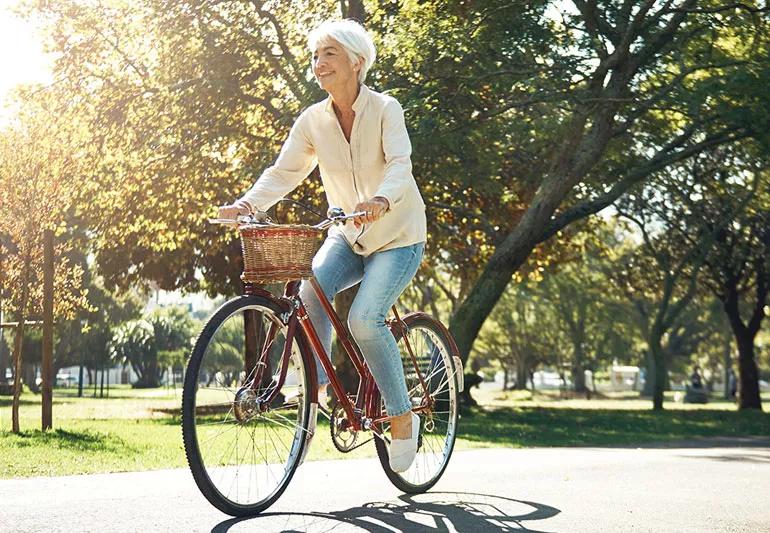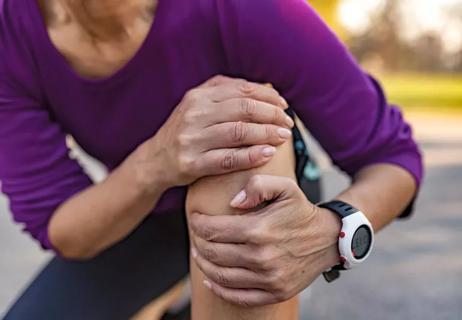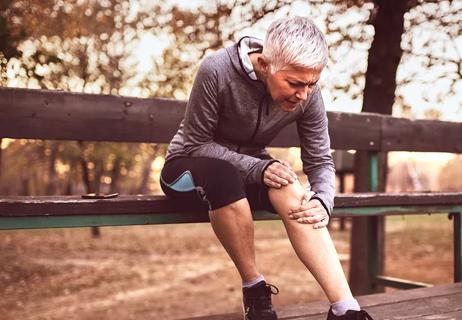Work on building strength and flexibility to keep the joints moving

There’s an inevitability when it comes to osteoarthritis claiming residence within your knees. The wear-and-tear of daily life simply chews away at the shock-absorbing cartilage in your joints over the years.
Advertisement
Cleveland Clinic is a non-profit academic medical center. Advertising on our site helps support our mission. We do not endorse non-Cleveland Clinic products or services. Policy
Even the toughest body parts eventually wear out, it seems. That’s just a reality.
But a bit of knee creakiness doesn’t mean that you should buy a recliner and kick your legs up, says physical therapist Kari Orlandi, DPT. Think the opposite, in fact, and keep your body moving.
“Inactivity makes knee osteoarthritis worse,” says Dr. Orlandi. “As soon as you stop moving, the joint becomes stiffer and stiffer. Think of it like this: Motion is lotion.”
The key, though, is to apply that “lotion” in a smart way. Here’s how.
Before looking at how to manage osteoarthritis in the knee, it’s a good idea to understand how that pain started in the first place with a little anatomy 101.
Rubbery and flexible connective tissue known as articular cartilage covers and sits between bones that meet in your knee. The slippery tissue cushions the joint, serving like a shock absorber as you walk, run, jump and otherwise move around the world.
That cartilage takes a beating, though, and small tears naturally develop as the malleable material grows more rigid over time. The articular cartilage in your knee eventually starts to flatten and stiffen like an old chair pad.
And when that cartilage stops absorbing the shock… well, you notice. (Ouch!)
Advertisement
Factors that lead to osteoarthritis in your knee include:
Osteoarthritis in the knee often introduces itself to you in four basic ways, says Dr. Orlandi. Those symptoms are:
First, some bad news: You’re not going to exercise arthritis out of your knee.
“There’s no amount of physical therapy that can change the arthritis,” notes Dr. Orlandi. “But what we can do is make its impact a lot less. The idea is to change the environment in which the arthritis lives in your body.”
That starts with establishing a lifetime fitness routine that builds cardio, strength and flexibility. “The human body is awesome in its ability to adapt,” says Dr. Orlandi. “So even if you have a lot of arthritis that is painful, you can make a huge impact on how you feel.”
The goal here is to get active to boost your heart rate — and to do so smartly. Listen to your body and adjust the intensity of your cardio activities in response to knee aches and pains, says Dr. Orlandi.
Ideal cardio fitness routines could include:
Aging doesn’t just cost you articular cartilage flexibility. It also takes a toll on your muscles, too — and that can lead to knee instability.
Sarcopenia is the natural loss of muscle mass that comes with age. The process typically starts around age 30. On average, adults lose 3% to 5% of their muscle strength every decade after that birthday.
Advertisement
A strength program targeting your lower body helps limit the decline in muscles supporting your knee. “Think of those muscles as load-sharing cables,” says Dr. Orlandi. “They work to limit stress and pressure on the joint.”
Workout equipment offers numerous ways to build strength through exercises such as leg presses, hamstring curls and quad extensions.
If you don’t have equipment or a gym membership, no worries! Try these simple exercises:
Stretching can help minimize the loss of flexibility in and around your knee. “You want to make sure you’re stretching your hamstrings, quads, calves and hip flexors to help address any stiffness you might feel,” says Dr. Orlandi.
Advertisement
Examples include:
Give yoga a try, too, to keep your joints and muscles in tip-top shape. (Learn some poses recommended by a certified yoga instructor to work your hips.)
Nothing is off-limits until your body says so, advises Dr. Orlandi: “Don’t approach your fitness routine with the idea that you just can’t do something,” she says. “Instead, look at moderation and modification.”
Advertisement
So if you’ve been a runner for years, osteoarthritis doesn’t mean you have to toss away your running shoes. Instead, consider scaling back mileage or intensity to ease strain on your knees. Try other activities, too, to work different muscles.
Just listen to your body and adjust accordingly, says Dr. Orlandi. And the most important thing? Don’t use osteoarthritis as an excuse to stop exercising and working your knees and surrounding muscles.
If you have pain that lasts a few days after a workout, it’s certainly OK to back off a little. But don’t take it as a message to stop.
“Giving up and throwing your hands in the air isn’t the answer for osteoarthritis,” says Dr. Orlandi. “Build exercise and movement into your lifestyle. You’ll be better off for it.”
Learn more about our editorial process.
Advertisement

Your knees could be hurting at bedtime because of inflammation, injury or some other condition that gets worse with pressure and positioning

Arthritic knees can benefit from bridging, mini squats, balancing exercises and other stretches

Don't let these aches and pains set you back

Consider these common reasons for knee pain

Understanding your options

A consistent walking program is an effective way to drop pounds and lose body fat

From playful movement to strength-building, kids need exercise to stay healthy and strong

After knee arthroplasty, swelling-related pain is common, but infection and blood clots are also risks

Start having sex about 72 hours before ovulation, then at least every other day during your fertile window

Attachment theory suggests that your earliest relationships shape connections throughout your life

It isn’t a recognized mental health disorder, but research shows that problematic social media use can negatively affect your mental health, self-esteem and sleep